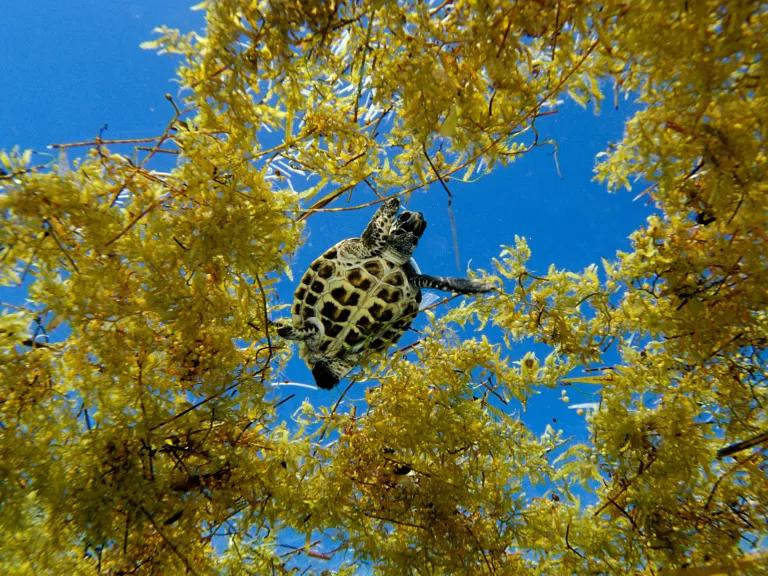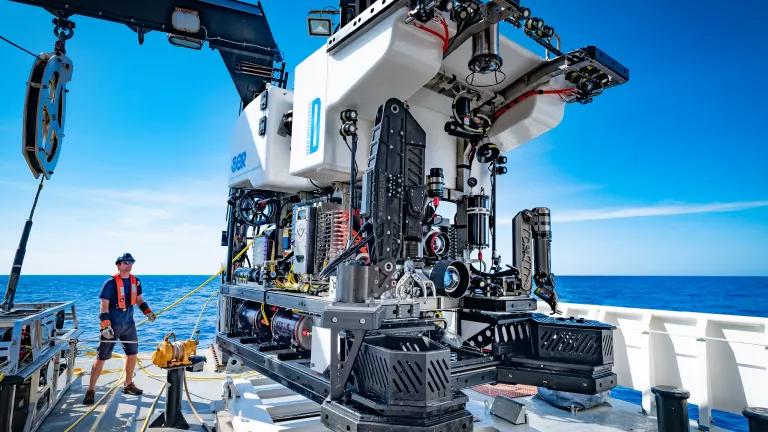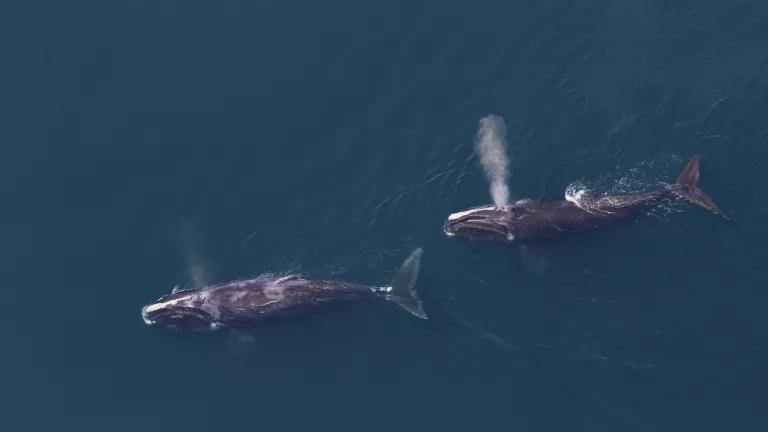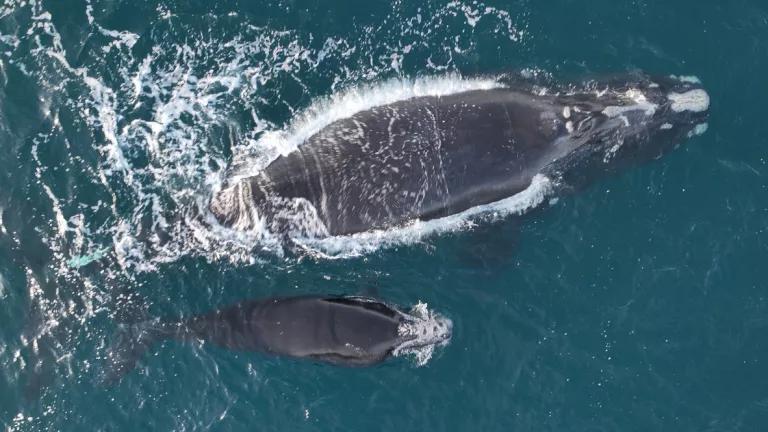Scientists Discover the World’s Largest Deep-sea Coral Reef Habitat
The U.S. Southeast’s Blake Plateau is a biodiversity hotspot and a world-class treasure in our own backyard.

Tens of thousands of ancient deep-sea coral mounds, some towering hundreds of feet above the seafloor, stretch across 6.4 million acres—an area larger than Vermont—in the Blake Plateau. Many contain thickets of the ghostly white Lophelia pertusa.
NOAA Office of Ocean Exploration and Research, Windows to the Deep 2019
The secret is out: roughly 80-200 miles offshore the Carolinas, Georgia, and Florida lies the world’s largest deep-sea coral province—the Blake Plateau. Long considered a Southern treasure, scientists have now identified the Blake Plateau’s coral coverage as the largest deep-sea coral reef habitat on Earth.
As experts gather today at the national Summit on Ocean Biodiversity to highlight the need to conserve the diversity of our nation’s marine life and habitats, it’s critical that breathtaking seascapes within the largely-pristine Blake Plateau be prioritized for conservation.
Fueled by the powerful Gulf Stream, the Blake Plateau displays dynamic ocean ecosystems from surface to seabed: its pervasive floating Sargassum seaweed meadows, methane seeps, and deep-sea corals feed and support a wide diversity of marine life. Fish like tuna, sharks, endangered and threatened sea turtles, elusive seabirds like the highly endangered black-capped petrel, and colossal sperm whales all rely on a healthy Blake Plateau.

Juvenile sea turtles can spend a decade or more in Sargassum rafts, seeking refuge and food.
Mark Conlin / VWPics / Alamy
Recent dives have revealed how amazing the Blake Plateau is. But without strong, durable safeguards, this area could be harmed by industrial activity. These waters’ time-limited protections from oil and gas development expire in 2032, and future development could destroy the area. Parts of the plateau’s seafloor contain manganese and other minerals and deep-seabed mining for minerals in vulnerable areas like the Blake Plateau is risky. It would generate sediment plumes that could stretch for miles, smothering corals and marine life well outside the immediate development zone.
It took tens of thousands of years for complex structures like the area’s “Million Mounds,” a 200-mile-long dense coral highway stretching from Florida to Georgia, to develop. Deep-sea coral species can grow just a few millimeters a year—compared to our fingernails that grow 2-3 millimeters a month. This slow growth rate makes deep-sea coral species highly vulnerable to disturbance.

Corals provide food and shelter for a wide range of fish and shellfish, such as valuable wreckfish and golden crab (shown here). In all, nearly 100 deep-sea fish species have been identified among the Blake Plateau reefs.
NOAA Office of Ocean Exploration and Research, Windows to the Deep 2018.
Scientists worldwide have called for strong protections for at least 30 percent of the world’s ocean to preserve biodiversity. But less than 1 percent of the Southeast’s waters are strongly preserved. We have a unique opportunity to provide durable conservation measures for key ecological features on the plateau now, before industrial threats take root. We need to keep this incredible place healthy for this and generations to come.
Dive into the Blake Plateau with footage from recent NOAA explorations:




